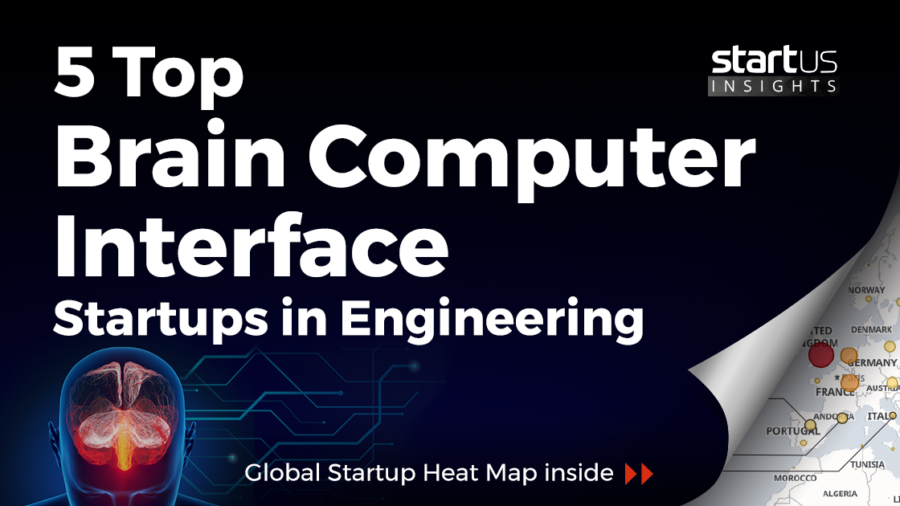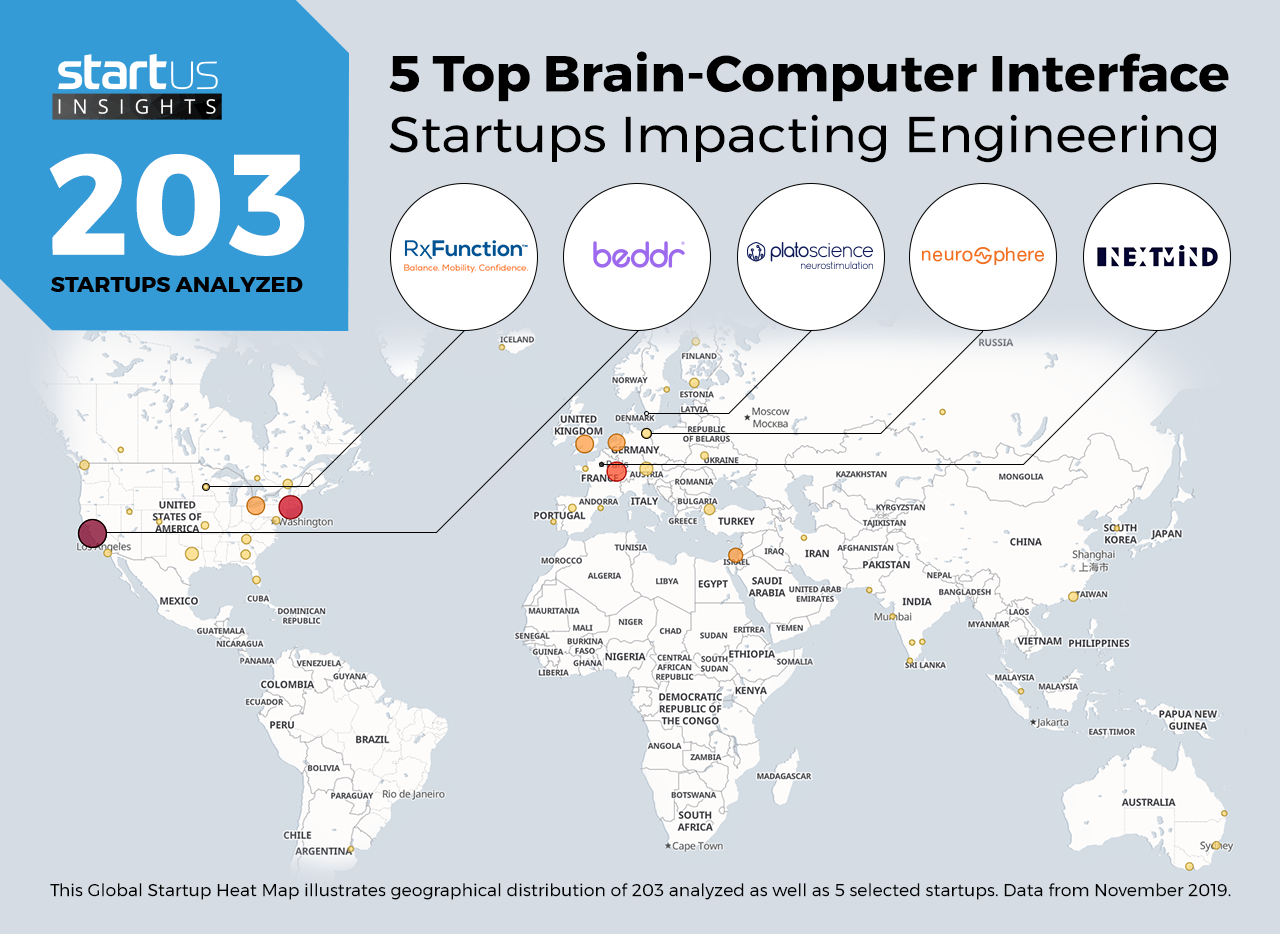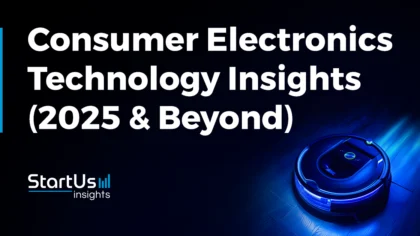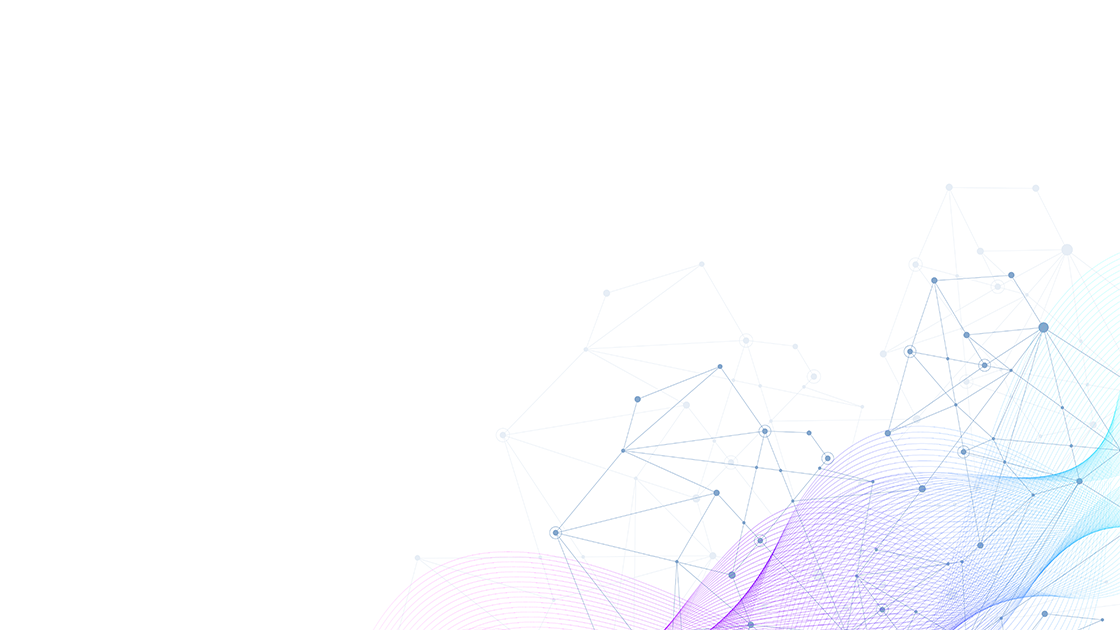Our Innovation Analysts recently looked into emerging technologies and up-and-coming startups working on solutions for the engineering sector. As there is a large number of startups working on a wide variety of solutions, we decided to share our insights with you. This time, we are taking a look at 5 promising Brain-Computer Interface startups.
Heat Map: 5 Top Brain-Computer Interface Startups
For our 5 top picks, we used a data-driven startup scouting approach to identify the most relevant solutions globally. The Global Startup Heat Map below highlights 5 interesting examples out of 203 relevant solutions. Depending on your specific needs, your top picks might look entirely different.
PlatoScience – Neurostimulation
Neurostimulation aims to solve the challenges faced in order to hasten the pace of learning and completing tasks. By sending small amounts of electricity to specific parts of the brain, neuro-engineering devices assist in attaining the state of neuroplasticity and the ability to learn new information and establish new brain connections. Danish startup PlatoScience develops a neurostimulation headset and mobile application for strengthening mental cognition, attention, and memory. It leverages the power of transcranial direct current stimulation (tDCS) to promote a chemical-free and neuro-friendly way of enhancing brain performance.
Neurosphere – Neurofeedback
Due to increasing cases of humans ‘burning out’ at work and the resulting leaves taken for mental health, there is a need for brain relief and meditation-based neural technologies. Neurofeedback headset devices tackle these issues by recording brainwave dynamics to guide people into a relaxed state of mind and helping retain that stability by practicing regular meditation skills. German startup Neurosphere introduces the neuro-headband for neurofeedback training, combined with the mobile meditation application, intended to direct users towards a more peaceful and calm brain while teaching them how to actively influence one’s own brainwave activity.
NextMind – Direct Brain Control
Brain control applications work to allow people to achieve a fantastic and controversial goal – to read minds and to control and manage the surrounding environment by interacting with connected devices by simply thinking it! This is made possible through extensive research and development work in electroencephalogram (EEG), electrocorticography (ECoG), virtual reality, and augmented reality-related neuro-engineering technologies, and is primarily applicable to patients with paralysis and speaking difficulties, as well as in gaming environments. French startup NextMind develops a non-invasive wearable brain-sensing device that analyzes people’s neural signals and transforms them into real-time commands for computers, mobiles, or Augmented & Virtual Reality (AR/VR) gaming settings. Their solution utilizes artificial neural networking and machine learning to establish human-digital synergy.
RxFunction – Neuroprosthetics
Neural prostheses intend to boost damaged, injured, or paralyzed motor, cognitive, and sensory systems in the human body. Neuroprosthetics uses a combination of non-invasive and implant technologies, together or individually, to intensify perceptions and restore lost or weakened biological functions. The US-based startup RxFunction develops Walkasins, a wearable lower limb neuroprosthesis. Their solution aids people with peripheral neuropathy by re-establishing sensor signal connections between Walkasins and patients’ brains for increased balance and mobility.
Beddr – Sleep Monitoring
Nowadays a lot of people suffer from sleep disorders. Brain-computer sleep interfaces address this problem by applying neuro-engineered wearables and hearables to monitor human sleep activity, track blood and breathing trends, pinpoint sleep abnormalities, as well as deliver dream insights. The US-based startup Beddr offers SleepTuner, a hypoallergenic optical fiber sensory device, placed over a person’s forehead to accurately monitor heart, breathing, and oxygen rates. Moreover, it also assesses the impact of sleep positioning on sleep quality. Using Bluetooth LE synchronization, users receive their sleep data in the morning after waking up.
What About The Other 198 Solutions?
While we believe data is key to creating insights it can be easy to be overwhelmed by it. Our ambition is to create a comprehensive overview and provide actionable innovation intelligence for your Proof of Concept (PoC), partnership, or investment targets. The 5 startups showcased above are promising examples out of 203 we analyzed for this article. To identify the most relevant solutions based on your specific criteria and collaboration strategy, get in touch.










